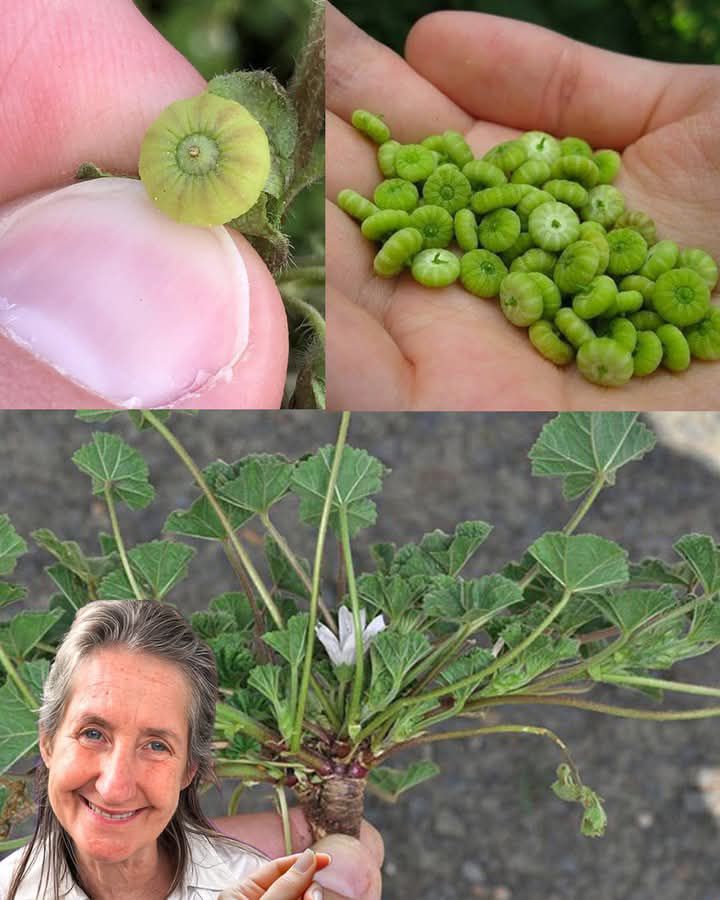ADVERTISEMENT
**Grows Everywhere, But Most People Have No Idea This Fruit Is a Real Treasure**
When we think of fruits that are prized for their health benefits and versatility in the kitchen, we often think of popular varieties like apples, oranges, and bananas. However, there is one fruit that grows abundantly in many parts of the world but remains largely underappreciated. It grows in backyards, along roadsides, and even in the wild, yet most people have no idea how incredibly valuable it is. The fruit in question is none other than the **fig**.
Figs have been around for centuries, revered for their unique taste, texture, and numerous health benefits. Yet, despite their long history and impressive nutritional profile, figs remain a mystery to many. Whether they’re enjoyed fresh or dried, figs are packed with nutrients, antioxidants, and fiber. But there’s more to this fruit than meets the eye. In this article, we’ll uncover the many reasons why figs are truly a hidden treasure and how you can incorporate them into your daily life for a wealth of health benefits.
### **A Brief History of the Fig**
Figs (Ficus carica) have been cultivated since ancient times. Native to the Middle East and Western Asia, they were among the first plants to be domesticated by humans. Evidence suggests that figs were cultivated as early as 11,000 years ago in the ancient region known as the Fertile Crescent. The fruit’s long-standing presence in human history makes it one of the oldest cultivated crops in the world.
In ancient civilizations, such as Mesopotamia, Egypt, and Greece, figs were highly prized for their sweetness and nutritional value. The fruit was not only eaten fresh, but also dried and preserved for long-term storage. Figs were often considered a symbol of fertility and prosperity and were used in religious ceremonies and offerings to gods.
The fig tree made its way to other parts of the world, including Europe, North Africa, and the Americas, where it has continued to thrive and spread. Today, figs are grown in warm climates around the world and are a common fruit in gardens, orchards, and even urban areas.
Despite their rich history, figs have not garnered the widespread recognition that other fruits, such as apples and grapes, have enjoyed. In fact, many people are unaware of how beneficial figs can be for their health and how easy they are to incorporate into their diets.
### **The Nutritional Value of Figs**
Figs are packed with essential nutrients, making them a superfood that is often overlooked. Whether fresh or dried, figs provide a wealth of vitamins, minerals, and antioxidants that are beneficial to overall health. Here are just a few of the key nutrients found in figs:
#### 1. **High in Fiber**
One of the standout features of figs is their high fiber content. Figs are an excellent source of dietary fiber, which is essential for maintaining a healthy digestive system. A single serving of fresh figs (about two medium-sized figs) provides around 1.5 grams of fiber, while dried figs pack even more fiber, with about 5 grams per serving.
Fiber is important for regulating bowel movements, preventing constipation, and supporting overall gut health. Additionally, fiber helps maintain healthy cholesterol levels and can aid in weight management by promoting feelings of fullness.
#### 2. **Rich in Vitamins and Minerals**
Figs are a great source of several essential vitamins and minerals, including:
– **Vitamin K**: Important for bone health and proper blood clotting, vitamin K is found in relatively high amounts in figs, particularly dried ones.
– **Vitamin B6**: This vitamin plays a crucial role in brain function, metabolism, and the production of red blood cells.
– **Potassium**: Figs are an excellent source of potassium, a mineral that helps regulate blood pressure and supports proper muscle and nerve function.
– **Magnesium**: Magnesium is important for maintaining normal muscle and nerve function, supporting the immune system, and promoting bone health.
– **Copper**: This trace mineral supports the formation of red blood cells and helps maintain healthy connective tissues.
The combination of these nutrients makes figs an excellent fruit for maintaining overall health and preventing deficiencies in key vitamins and minerals.
#### 3. **Packed with Antioxidants**
Figs are rich in antioxidants, compounds that help protect the body from oxidative stress and free radical damage. Free radicals are unstable molecules that can contribute to the development of chronic diseases, including cancer, heart disease, and premature aging.
Figs contain several powerful antioxidants, including polyphenols, flavonoids, and carotenoids. These antioxidants help neutralize free radicals, protect cells from damage, and reduce inflammation. As a result, figs are often considered a fruit that promotes longevity and can help reduce the risk of chronic diseases.
#### 4. **Natural Sugar Source**
Figs are naturally sweet, which makes them an excellent alternative to processed sugars. They contain natural sugars, such as fructose and glucose, which provide a quick source of energy. The natural sugars in figs are accompanied by fiber, which helps slow the absorption of sugar into the bloodstream, preventing blood sugar spikes.
Because of their natural sweetness, figs are often used as a healthier alternative to refined sugars in baking, smoothies, and other recipes. When consumed in moderation, figs can satisfy a sweet tooth without the negative health effects associated with added sugars.
### **Health Benefits of Figs**
Figs are not just tasty—they offer a variety of health benefits that can improve your overall well-being. From supporting digestive health to promoting heart health, here’s a closer look at some of the key health benefits of figs:
For Complete Cooking STEPS Please Head On Over To Next Page Or Open button (>) and don’t forget to SHARE with your Facebook friends
